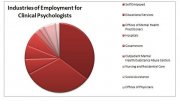
A career as a psychologist requires a lot of specialized education and training. License and qualifying education all takes place at the graduate level. However, the journey begins a good deal earlier.
Step 1:
Take a college prep curriculum in high school. Do some career exploration.
Step 2:
Undergraduates often have the opportunity to take survey courses in different sub-specialties. This can help with program selection.
Step 3:
The American Psychological Association (APA) notes that getting some research experience at the undergraduate level can help a student make the cut at the graduate level.
Step 4:
Students have the option of joining professional organizations at the student stage. One option is a college-based psychology association. Some students join the American Psychological Association of Graduate Students (APAGS) as undergraduates.
Step 5:
Select a program. There are many types of psychology program offered at the graduate level. Healthcare related fields include clinical psychology, counseling psychology, and school psychology. There are additional sub-specialties like health psychology and pediatric or psychology.
The PsyD offers solid preparation for practitioner and generally takes a little less time to complete. It requires less research - but this has its downsides. Many PhD candidates receive funding for their work; PsyD students are more likely to graduate with educational debt.
The American Psychological Association notes that for some students, it is more realistic to apply first to a master’s program. The master’s can be a terminal degree for some specialties, for example, industrial/ organizational psychology. In many cases, though, a master’s program is a stepping stone toward a doctoral degree. (Students who do not go on for a doctoral degree typically find jobs in fields like human services and human resources, but are not actually psychologists. Some counseling psychology graduates become counselors.)
Step 6:
Complete degree requirements. Most doctoral level psychologists spend at least four years completing their graduate education. They will take practicum courses that begin to give them experience in the field - and, in some cases, references.
Some students choose to join APA divisions related to their practice area.
Step 7:
Students in healthcare-related fields do a formal internship that is one full-time year or two part-time years. They go through a matching process through the APA and/or the Association of Psychology Postdoctoral and Internship Centers. Internships can be quite competitive. A student who has done practicum rotations is a particular specialty will have an easier time finding an internship in that field.
Source: www.psychologist-license.com
You might also like:






|
How to Land a Top-Paying School psychologists Job: Your Complete Guide to Opportunities, Resumes and Cover Letters, Interviews, Salaries, Promotions, What to Expect From Recruiters and More Book (Tebbo)
|

















Its not too good nor is it too bad. It is a pretty small department within WashU but it does have quite a bit of active research going on. While it is nowhere close to the top cs schools (Stanford , CMU etc) it has its own advantage in the fact that since there are very people actually taking CS as a major , the higher level classes usually don't have too many students , which makes the learning experience better in my opinion.
The Billiken is a good-luck figure who represents "things as they ought to be." !